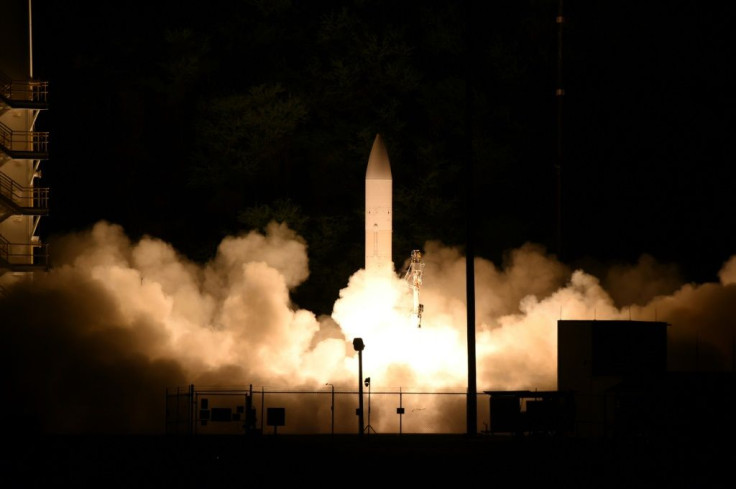US Navy Scrambles To Catch Up With Russia, China; Wants Hypersonic Anti-Ship Missile 'HALO' Before 2028
KEY POINTS
- The Navy calls it the Hypersonic Air-Launched Offensive Anti-Surface Warfare missile
- The Navy has sought $92.5 million for the program in the 2023 Fiscal Year
- The proposal does not mention any specific desired launch platforms for the missile
The U.S. Navy, in its latest budget request, has highlighted the need for an air-launched hypersonic anti-ship cruise missile before 2028, for it to counter Russia and China. This comes days after videos from China showed what seems to be an air-launched hypersonic missile slung underneath a bomber.
In the U.S. Navy's recently released documents related to the service's latest budget request for the 2023 Fiscal Year, it stressed the significance of the weapon it calls Hypersonic Air-Launched Offensive Anti-Surface Warfare missile, or HALO, reported The Drive. HALO was earlier called Offensive Anti-Surface Warfare Increment 2 (OASuW Inc 2).
"HALO will address advanced threats from engagement distances that allow the Navy to operate in, and control, contested battlespace in littoral waters and Anti-Access/Area Denial (A2/AD) environments," the report quoted the budget document. "In order to counter the evolving near-peer threat capability, OASuW Inc 2/HALO is required to be fielded in FY 2028," it added.
Seeking $92.5 million for the HALO program in the 2023 Fiscal Year, the Navy says the funds will be used towards " initiating a new technology development program for the missile, making targeted investments in maturing subsystem technologies, and component or full-scale prototyping activities."
Though there aren't many details, including the performance and capabilities of HALO, in the document, there is a mention of an integrated datalink which is likely to enable the missile to receive new targeting information throughout the flight. This will also help retarget the weapon entirely, as well as potentially send back various kinds of information and work with other missiles.
According to The Drive report, the budget proposal does not mention any specific desired launch platforms for HALO, but the missile will likely be first integrated into U.S. Navy's Super Hornet fighter jet. It could eventually be made compatible with aircraft like the F-35C Joint Strike Fighter, though the missile would be too large for the F-35C at this point.
Though the U.S. Navy's priority right now would be to acquire a hypersonic anti-ship cruise missile, it may later develop HALO to incorporate land-attack capability. That being case, the budget proposal makes it clear that the Navy views HALO as instrumental in ensuring the Force's ability to conduct aerial stand-off strikes.
The budget also does not name specifically name the "evolving near-peer threat capability" that is pushing the Navy to acquire HALO, recent reports said Russia is working towards fielding its own ship-launched air-breathing hypersonic cruise missile, the Zircon. Recently, a video from China had shown a People's Liberation Army Xian H-6N bomber carrying a potent and mysterious air-launched anti-ship ballistic missile slung along the bottom of its fuselage. Two days later, the Chinese state released a video showing the test-fire of a mysterious missile, thought to be hypersonic YJ-21, from one of its huge Type 055 destroyers.

© Copyright IBTimes 2024. All rights reserved.




















